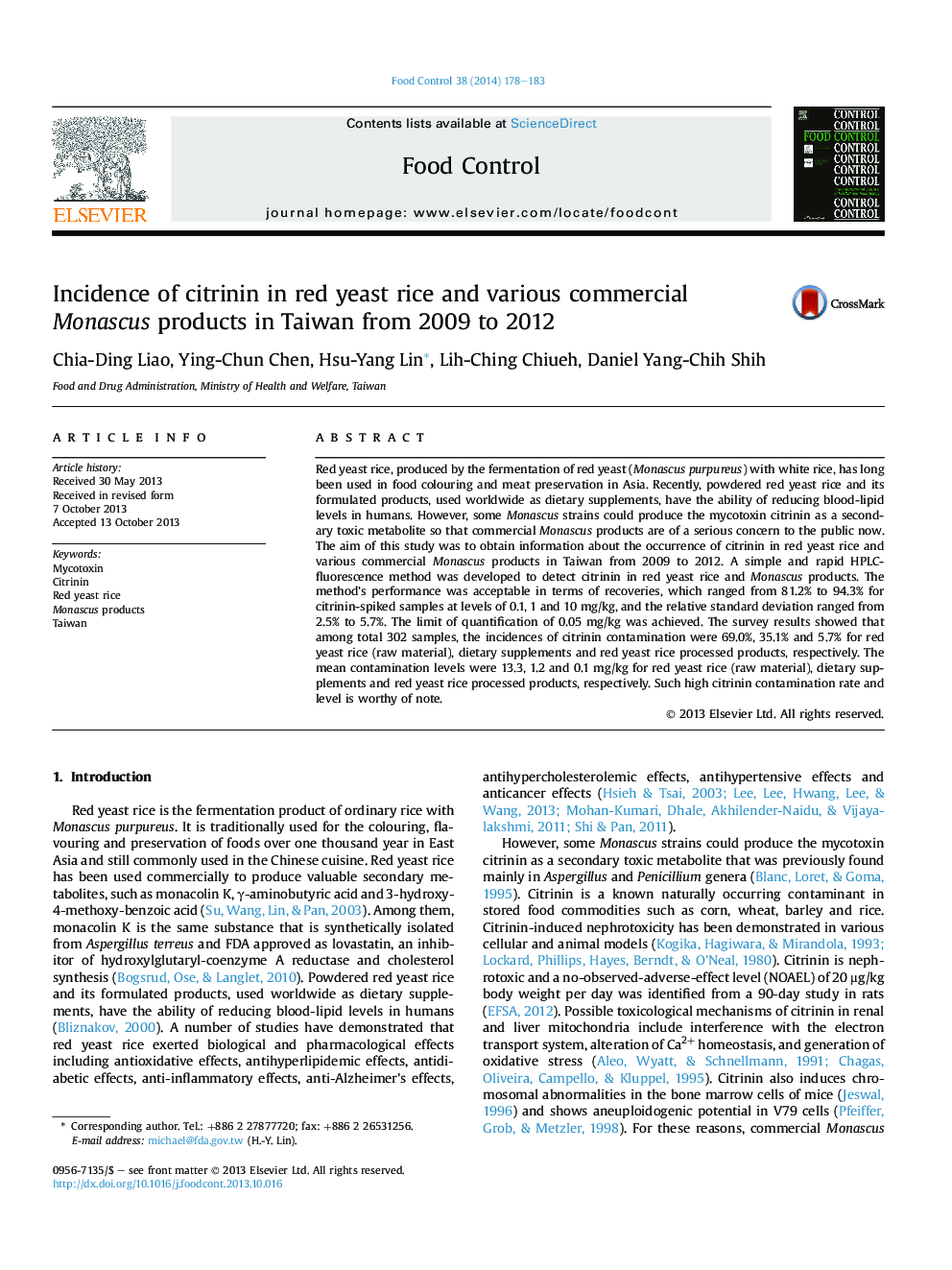| Article ID | Journal | Published Year | Pages | File Type |
|---|---|---|---|---|
| 6392068 | Food Control | 2014 | 6 Pages |
Abstract
Red yeast rice, produced by the fermentation of red yeast (Monascus purpureus) with white rice, has long been used in food colouring and meat preservation in Asia. Recently, powdered red yeast rice and its formulated products, used worldwide as dietary supplements, have the ability of reducing blood-lipid levels in humans. However, some Monascus strains could produce the mycotoxin citrinin as a secondary toxic metabolite so that commercial Monascus products are of a serious concern to the public now. The aim of this study was to obtain information about the occurrence of citrinin in red yeast rice and various commercial Monascus products in Taiwan from 2009 to 2012. A simple and rapid HPLC-fluorescence method was developed to detect citrinin in red yeast rice and Monascus products. The method's performance was acceptable in terms of recoveries, which ranged from 81.2% to 94.3% for citrinin-spiked samples at levels of 0.1, 1 and 10Â mg/kg, and the relative standard deviation ranged from 2.5% to 5.7%. The limit of quantification of 0.05Â mg/kg was achieved. The survey results showed that among total 302 samples, the incidences of citrinin contamination were 69.0%, 35.1% and 5.7% for red yeast rice (raw material), dietary supplements and red yeast rice processed products, respectively. The mean contamination levels were 13.3, 1.2 and 0.1Â mg/kg for red yeast rice (raw material), dietary supplements and red yeast rice processed products, respectively. Such high citrinin contamination rate and level is worthy of note.
Related Topics
Life Sciences
Agricultural and Biological Sciences
Food Science
Authors
Chia-Ding Liao, Ying-Chun Chen, Hsu-Yang Lin, Lih-Ching Chiueh, Daniel Yang-Chih Shih,
